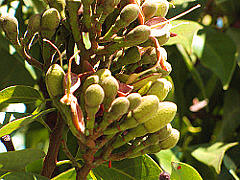|
General Fatigue, Bladder Problems, Flatulence
Diarrhea, Dysentery, Yeast & Fungus
Jatoba
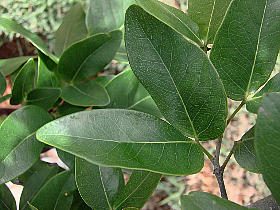
Jatoba
(Hymenaea courbaril)
Code: BOS242 -- Price: $18.50
120 Capsules x 500 mg.
Order Now
 Email
Email
 Summarized Description: Summarized Description:
Jatoba (Brazilian Copal) is a large canopy tree, native to parts of the Amazon
rainforest and tropical Central America. It is better known for its hard wood,
prized by carpenters, its fruit (called "stinky toe," oddly enough, though
the scent is not so off-putting to those in the cultures that use it), and
its copal resin, called "anime." Nonetheless, its long standing use as
a medicinal botanical is long-standing and well-established.
Uses & Protocols
 Jatoba is uses to fight non-specific fatigue,
dysentery, diarrhea, flatulence, bladder problems, and hemoptysis (coughing
blood from the lungs), prostititis, cystitis, and yeast and fungal infections.
Jatoba is traditionally taken as a tea (decoction) or tincture. For ease of use,
we provide in capsule form. Dosage: one capsule, twice daily.
Warnings & Contraindications
 Due to its hypoglycemic effect, Jatoba should
not be used by diabetics unless under practitioner oversight.
Shelf-Life
 Five years or more.
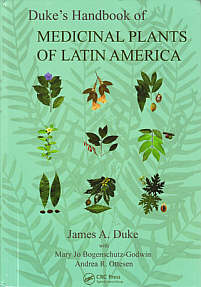
Medicinal Activities
 Further information for practitioners: Further information for practitioners:
World-famous botanist Dr. James Duke attributes the following activities
to this plant (p. 362-364; see hardcopy cover at right,
purchasable on Amazon),
drawn from the extant literature. (See his graduation for "level of
efficacy" on our amazon traditionals page;
followed by Duke's bibliographic abbreviations (in capital letters),
which we identify
on a separate page.)
 Duke provides a " food farmacy potential" score for this
plant of "FNFF=!."
- Analgesic (f; IED)
- Antifeedant (f1; EGG)
- Antiinflammatory (1; RAI; X10715848)
- Antioxidant (1; RAI)
- Antiradicular (1; RAI)
- Antirheumatic (f; MPG)
- Antiseptic (f1; DAW; RAI)
- Antispasmodic (f; MPG)
- Antitumor (1; JNP65:11; RAI)
- Antitussive (f1; RAI; RAR)
- Astringent (f; MPB; RAR)
- Bactericide (1; MPG; RAI)
- Balsamic (f; MPB)
- Bechic (f; MPB)
- Cadidicide (1; MPG; RAI)
- Carminative (f; VOD)
- CNS-Depressant (f; VOD)
- Cytotoxic (1; JNP65:11)
- Decongestant (f; RAI)
- Depurative (f; GMJ)
- Digestive (f; RAI)
- Diuretic (f; MPB; RAI)
- Expectorant (f; IED)
- Febrifuge (f; GMJ)
- Fungicide (f1; DAV; MPG; RAI)
- Hemostat (f; EGG; RAR)
- Hepatoprotective (f; RAI)
- Hypoglycemic (1; MPG; RAI)
- Insectifuge (f1; EGG)
- Insulinogenic (1; MPG)
- Laxative (f; DAW; RAI)
- 5-Lipoxygenase-Inhibitor (1; X10715848)
- Molluscacide (1; RAI)
- Orexigenic (f; IED)
- Pectoral (f; MPB)
- Vermifuge (f; DAW; MPB; RAI; VOD)
- Vulnerary (f; RAI)
Indications
 Further information for practitioners: Further information for practitioners:
Duke provides the following indications for this plant:
- Anemia (f; MPB)
- Anorexia (f; IED; MPG)
- Arthritis (f; DAW; VOD)
- Asthma (f; DAW; MPG; RAI; VOD)
- Athlete's Foot (f; DAV; RAI)
- Bacillus (1; MPG; RAI)
- Bacteria (1; MPG)
- Beriberi (f; RAI)
- Bleeding (f; RAI; RAR)
- Blennorrhagia (f; DAW; IED; MPB)
- Bronchitis (f; IED; MPB; RAI; VOD)
- Bruises (f; DAW; VOD)
- Bursitis (f; RAI)
- Cancer (1; JNP65:11)
- Candida (1; MPG)
- Cardiopathy (f; RAI)
- Catarrh (f; DAW)
- Colic (f; RAI)
- Coughs (f; DAV; RAI; SOU; VOD)
- Cramps (f; VOD)
- Cystosis (f; DAV; RAI; RAR)
- Dermatosis (f; MPB; RAI)
- Diabetes (f1; MPG; RAI)
- Diarrhea (f; DAW; MPG; RAI)
- Dysentery (f; GMJ; RAI)
- Dysmenorrhea (f; RAI)
- Dyspepsia (f; IED; RAI; VOD)
- Emphysema (f; DAW; RAI; VOD)
- Enterosis (f; DAW; RAI)
- Escherichia (1; MPG; RAI)
- Fatigue (f; RAI)
- Fever (f; GMJ; RAI)
- Fracture (f; DAW; JFM; RAI)
- Fungus (f1; DAV; MPG)
- Gas (f; RAI; VOD)
- Gastrosis (f; DAW; GMJ; JFM; RAI)
- Headache (f; DAW)
- Hematuria (f; MPG; RAI)
- Hemoptysis (f; RAI)
- Hepatosis (f; DAV; RAR)
- High Blood Pressure (f; JFM)
- Hypoglycemia (f; RAI)
- Hysteria (f; JFM)
- Infection (f1; MPG; RAI)
- Inflammation (1; X10715848)
- Laryngitis (f; IED)
- Malaria (f; DAW; JFM; RAI)
- Metrorrhagia (f; RAI)
- Myalgia (f; VOD)
- Mycosis (f1; DAV; MPG; RAI)
- Nephrosis (f; DAW; MPG; VOD)
- Oliguria (f; RAI)
- Onychosis (1; RAI)
- Ophthalmia (f; RAI)
- Orchosis (f; RAI)
- Pain (f; IED; MPG; VOD)
- Prostatosis (f; DAV; MPB; RAR)
- Pseudomonas (1; MPG; RAI)
- Pulmonosis (f; DAW)
- Respirosis (f; DAW; RAI)
- Rheumatism (f; IED; JFM; VOD)
- Sores (f; DAW; VOD)
- Spasms (f; DAW)
- Staphylococcus (1; MPG)\
- Stomach (f; DAW)
- Stomachache (f; MPG)
- Stomatosis (f; DAW; MPG; RAI)
- Strangury (f; MPB)
- Tuberculosis (f; DAV; RAI; RAR; SOU)
- Ulcers (f; DAW; JFM)
- VD (f; DAW; MAX)
- Worms (f; DAW; JFM; VOD)
- Wounds (f; VOD)
- Yeast (1; MPG; RAI)
|
 To U.S. Users: To U.S. Users: This product
have not been evaluated by the U.S. Food & Drug Administration.
It is not intended to diagnose, treat, cure, or prevent any disease.
|
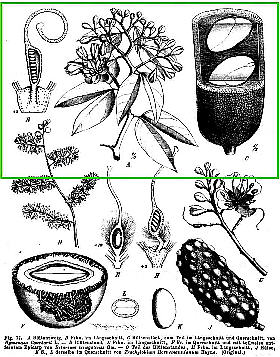
 Recent Studies on Jatoba
Recent Studies on Jatoba
Sourced from PubMed
 Disclaimer: The following citations provide findings on the
properties of Jatoba and offer insights into prospective areas of future research.
These findings should not be inferred to provide the basis of medicinal claims,
nor should they be relied upon by the public, as such. Readers who want full access to
the PubMed database are encouraged to
register with NCBI. Disclaimer: The following citations provide findings on the
properties of Jatoba and offer insights into prospective areas of future research.
These findings should not be inferred to provide the basis of medicinal claims,
nor should they be relied upon by the public, as such. Readers who want full access to
the PubMed database are encouraged to
register with NCBI.
 As of Jan. 2017, there were
61 citations on PubMed for Jatoba. Below we list a few of the more notable: As of Jan. 2017, there were
61 citations on PubMed for Jatoba. Below we list a few of the more notable:
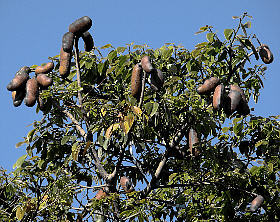
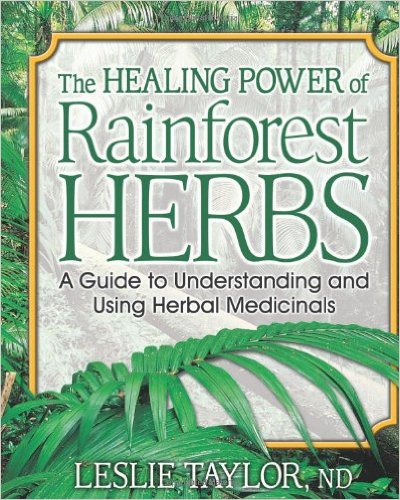
 Extensive information about
Jatoba is covered on the Raintree Forest website.
Even better, you can purchase Leslie Taylor's excellent reference book,
The Healing Power
of Rainforest Herbs: A Guide to Understanding and Using Herbal Medicinals at Amazon. Extensive information about
Jatoba is covered on the Raintree Forest website.
Even better, you can purchase Leslie Taylor's excellent reference book,
The Healing Power
of Rainforest Herbs: A Guide to Understanding and Using Herbal Medicinals at Amazon.
 Jatoba is discussed in
Wikipedia, however,
its medicinal properties are completely omitted. Jatoba is discussed in
Wikipedia, however,
its medicinal properties are completely omitted.
|



 Recent Studies on Jatoba
Recent Studies on Jatoba

